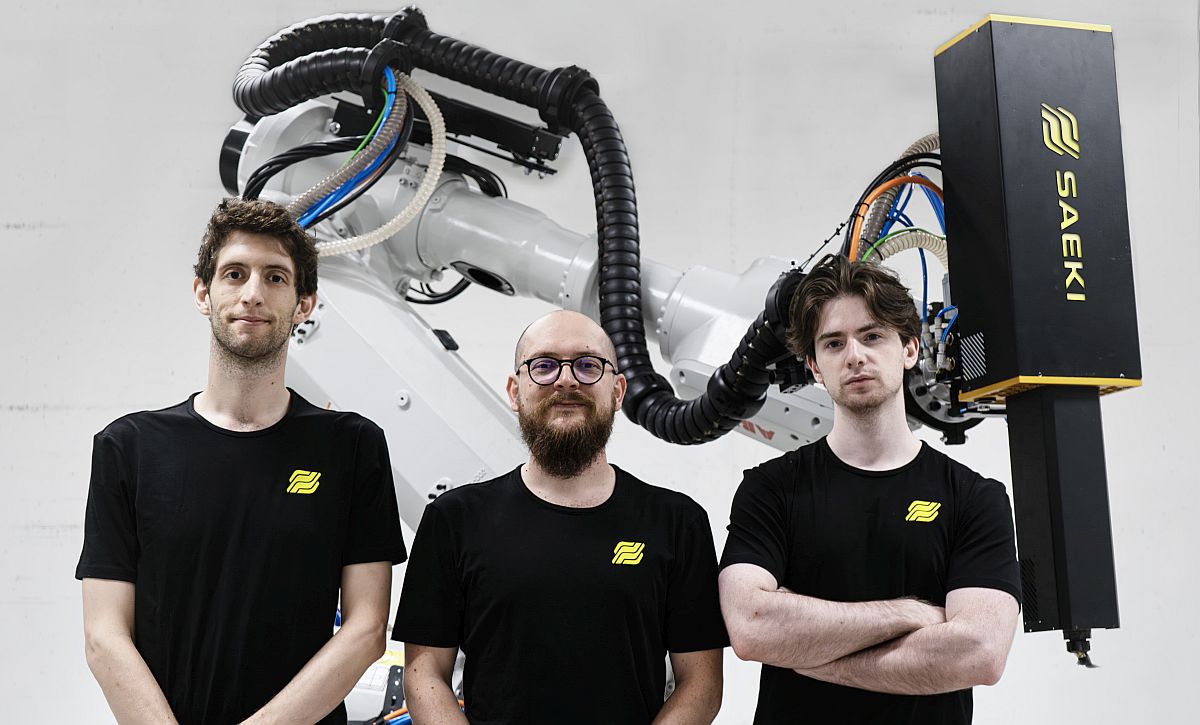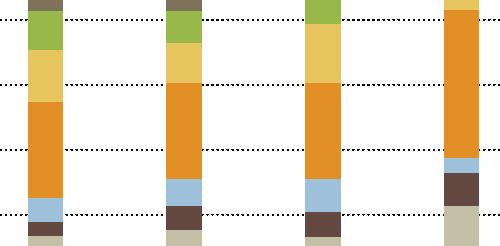
Saeki, a robots-as-a-service startup, is building fully automated plants with industrial robots that use 3D tech to make creating giant concrete molds faster and more cost-efficient. The raised USD 2.3 million brings the company into the operations phase.
Wingman Ventures led the investment round for Saeki Robotics, supported by Vento Ventures, Getty Capital and angel investors. With this funding, Saeki is now well-positioned to accelerate its development and launch its microfactories for concrete molds.
Although additive manufacturing technologies have been here for a while, using 3D printing for large items, like wind turbine blades, aeroplanes and car parts, is still slow, and industry quality and scaling cannot yet be achieved. Moreover, to develop a lightweight carbon fibre element or to build a topologically optimised concrete floor slab, buyers would have to wait months and spend vast sums of money to receive a first sample and only then build a prototype, let alone consider reiterating for any flaws.
ETH spinoff Saeki wants to fix these challenges by up-scaling additive manufacturing (AM) processes towards large-scale applications, focusing on concrete formwork. Founded in 2021 by Andrea Perissinotto, Oliver Harley and Matthias Leschok, Saeki SAEKI works with the architectural design, engineering design and construction services industry to turn complex designs into reality, save concrete and CO2.
They developed a new method to produce custom concrete formwork cost-effectively and with minimal material usage. The startup is working on a large-scale automated digital fabrication (dfab) cell ( > 4m3 ) comprising an industrial robot, tool-changing equipment, and a software package, allowing a user-friendly design-to-product workflow.
The startup is building its first production hub containing industrial robots that combine multiple digital manufacturing methods, from 3D printing, milling, and inspection to create an all-in-one low-waste production process and recyclable materials. The robots will act as microfactories; self-contained units able to do all the manufacturing steps, and easily deployable for localised manufacturing. Additionally, SAEKI will offer a quoting platform tailored to the customers' own business needs to remove the complex opaque approach currently in the market.
It also plans to work with the composites industry, which builds the lightweight but strong parts found on airplanes, cars and bikes, among other things. These parts are usually made in complex molds created from metal or composite materials. Perissinotto said this creates a bottleneck for companies because the molds are expensive and need a long time to build. SAEKI’s goal is to reduce lead time costs and use its tooling processes to enable companies in the composites industry to have faster hardware production cycles.
(Press release/RAN)
Photo: L-R: Oliver Harley, Matthias Leschok and Andrea Perissinotto.























































Please login or sign up to comment.
Commenting guidelines